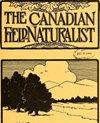Combining current and historical biodiversity surveys reveals order of magnitude greater richness in a British Columbia marine protected area
Q4 Agricultural and Biological Sciences
引用次数: 0
Abstract
The value of biodiversity and of documented biodiversity surveys is well established. Extracting historical biodiversity data and synthesizing them with current data can provide a more comprehensive estimate of total diversity and guide future monitoring. We demonstrate the utility of compiling historical and recent biodiversity data to better characterize taxon richness and composition. Our focus is an otherwise unmonitored habitat in an unmonitored British Columbia provincial park, in a heavily impacted region of the Salish Sea that was designated a United Nation Biosphere Reserve in 2021. We conducted surveys and compiled historical records that together spanned three intertidal habitats and 43 years. From these combined data we report a total of 99 taxa, an order of magnitude increase over the number listed in the park’s Master Plan. These include seven non-native species, of which four are newly reported here. Rarefaction, extrapolation, and multivariate dissimilarity analyses revealed the roles of methods and habitat types in contributing to differences in taxon richness and composition among surveys. This data compilation illustrates many of the challenges and opportunities in aligning and assembling independent space-time snapshots of alpha (i.e., local) diversity to better understand the gamma (i.e., regional) diversity of a marine protected area and provides the foundational data needed to design effective future monitoring at molecular to ecosystem scales.结合当前和历史的生物多样性调查显示,不列颠哥伦比亚省海洋保护区的丰富程度要高得多
生物多样性和记录在案的生物多样性调查的价值是公认的。提取历史生物多样性数据并将其与当前数据综合起来,可以更全面地估计生物多样性总量,指导未来的监测。我们展示了编译历史和最近的生物多样性数据的效用,以更好地表征分类单元的丰富度和组成。我们的重点是不列颠哥伦比亚省一个未受监控的省级公园内一个未受监控的栖息地,该公园位于萨利希海受影响严重的地区,于2021年被指定为联合国生物圈保护区。我们对三个潮间带栖息地进行了调查,并编纂了43年的历史记录。从这些综合数据中,我们报告了总共99个分类群,比公园总体规划中列出的数量增加了一个数量级。其中包括7种非本地物种,其中4种是新报道的。稀疏分析、外推分析和多元差异分析揭示了不同调查方法和生境类型对分类单元丰富度和组成差异的影响。该数据汇编说明了校准和组装独立的α(即当地)多样性时空快照的许多挑战和机遇,以更好地了解海洋保护区的γ(即区域)多样性,并提供了在分子到生态系统尺度上设计有效的未来监测所需的基础数据。
本文章由计算机程序翻译,如有差异,请以英文原文为准。
求助全文
约1分钟内获得全文
求助全文
来源期刊

The Canadian Field-Naturalist
Agricultural and Biological Sciences-Ecology, Evolution, Behavior and Systematics
CiteScore
0.60
自引率
0.00%
发文量
54
期刊介绍:
The Canadian Field-Naturalist (ISSN: 0008-3550) publishes scientific papers by amateur and professional naturalists and field biologists, reporting observations and results of investigations in any field of natural history, provided they are original, significant, and relevant to Canada.
 求助内容:
求助内容: 应助结果提醒方式:
应助结果提醒方式:


